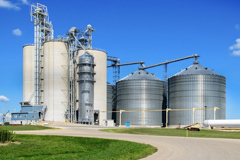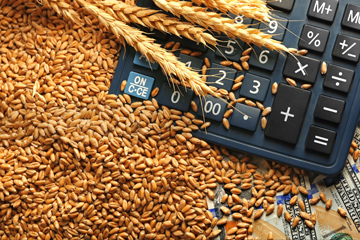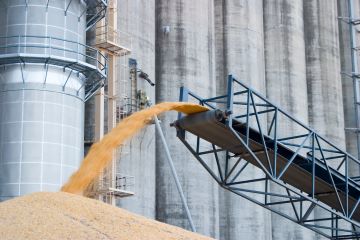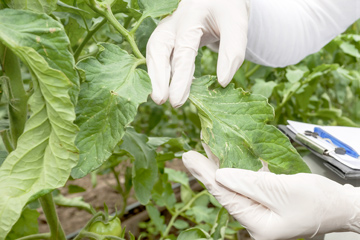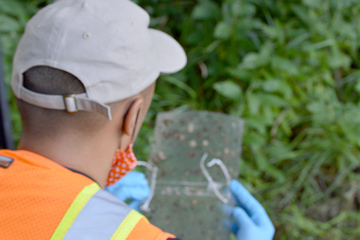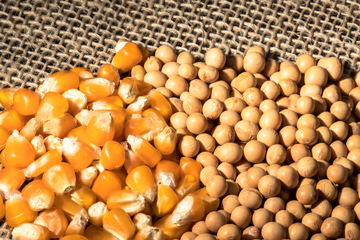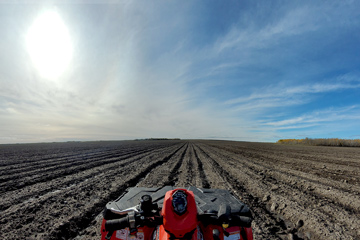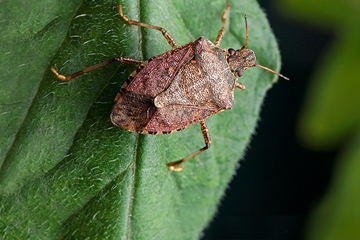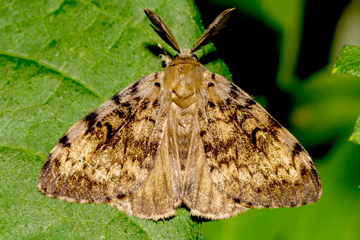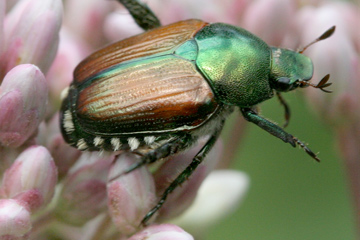Beginning the week of February 24, the Minnesota Department of Agriculture (MDA), working with state government and industry partners, will begin sampling and testing raw cow’s milk for the H5N1 flu virus to identify where the virus is present, monitor trends, and prevent its spread to unaffected dairy herds and poultry flocks around the state.
“H5N1 is an emerging disease in dairy cattle, and conducting disease surveillance supports the state’s ability to effectively respond to outbreaks and limit the potential impact on the livestock and poultry industries, as well as on public health,” said MDA Commissioner Thom Petersen.
There is no concern for the safety of the public milk supply, as all milk sold in stores is pasteurized to kill bacteria and viruses, and pasteurization has been shown to effectively eliminate active H5N1 virus present in milk.
People and pets should not consume unpasteurized (raw) milk, raw milk cheeses, or raw or undercooked meat from animals with suspected or confirmed H5N1 virus infection. All raw dairy products may contain harmful bacteria, parasites, or viruses which can cause illness.
The MDA will order the testing of raw milk samples already collected from each of Minnesota’s approximately 1,600 dairy farms on a monthly basis. These routinely collected bulk milk samples, which are taken before the pasteurization process, will be sub-sampled by industry labs and sent for H5N1 testing to the Minnesota Veterinary Diagnostic Lab (MVDL) at the University of Minnesota.
When a sample analysis shows the presence of influenza virus, the Minnesota Board of Animal Health (BAH) will be notified to collect an additional verification sample to confirm the presence of the H5N1 virus on the identified farm. All non-negative samples will also be forwarded to the National Veterinary Diagnostic Laboratory in Ames, Iowa, for further confirmation and genetic typing. The BAH will also initiate a farm quarantine and disease investigation.
Any farm where H5N1 is confirmed will be quarantined for a minimum of 30 days, during which no livestock, poultry, cats, manure, waste milk, or carcasses can leave the farm without a movement permit from the BAH.
Milk from healthy animals can still be sold for pasteurization, as usual.
Before lifting the quarantine, a farm must have three consecutive negative bulk milk tank tests taken at least seven days apart, and complete management and biosecurity plans for preventing the spread of the virus. Case managers will help farms work through this process.
When H5N1 is confirmed in a herd, the Minnesota Department of Health (MDH) will request a list of people on the farm who were exposed to the infected herd. MDH workers will contact these individuals to give them the option to enroll in human health monitoring.
Human cases of H5N1 are rare, and to date no human cases have been found in Minnesota.
“Although we understand that people may be concerned about getting sick with H5N1, the risk to the general public remains low at this time,” said Dr. Ruth Lynfield, state epidemiologist and medical director at MDH. “People most at risk are those who have direct contact with infected or potentially infected animals and their environments.”
Symptoms of H5N1 in people can include red, itchy, watery eyes and/or cough, sore throat, and a fever.
This testing plan is part of the National Milk Testing Strategy announced in December by the U.S. Department of Agriculture Animal and Plant Health Inspection Service (USDA-APHIS), which requires sampling and testing of all raw cow milk for H5N1.
The MDA is working with the federal agency on funding for the testing.
USDA-APHIS is providing financial support to help dairy producers enhance biosecurity on their farms and follow the necessary response protocols if H5N1 is confirmed in their herd.
Anyone with questions about the testing plan can contact the MDA at TestingMilk.MDA@state.mn.us or visit the MDA website for more information.
###
Media Contacts
Larry Schumacher, MDA Communications
651-201-6629
Larry.Schumacher@state.mn.us
Michael Crusan, BAH Communications
651-201-6815
Michael.Crusan@state.mn.us
Amy Barrett, MDH Communications
651-201-4993
Amy.Barrett@state.mn.us
The Minnesota Department of Agriculture (MDA) is now accepting applications for the 2025 Agricultural Growth, Research, and Innovation (AGRI) Meat Education and Training (MEAT) Grant Program.
The grant helps Minnesota schools establish or enhance meat cutting and butchery training programs.
Applicants must be public or private schools or school districts in Minnesota that are seeking to establish or enhance meat cutting and butchery training for secondary students (Grades 6 through 12).
The MDA anticipates awarding approximately $225,000 using a competitive review process. Applicants may request a minimum of $5,000 and a maximum of $75,000 per project; up to 10% of each grant may be used for faculty training. Schools are not required to contribute matching funds.
The AGRI MEAT Grant application must be received by 4 p.m. on Tuesday, April 1, 2025, through the MDA’s online application system. Decisions are expected in early May.
Visit the AGRI Meat Education and Training (MEAT) Grant Program webpage for more information.
###
Media Contact
Allen Sommerfeld, MDA Communications
651-201-6185
Allen.Sommerfeld@state.mn.us
Applications are now open for grants from the Minnesota Department of Agriculture (MDA) to increase the competitiveness of domestic and foreign markets for Minnesota-grown specialty crops.
The Specialty Crop Block Grant Program (SCBGP) funds projects that will:
- Market and promote specialty crops
- Support research and development related to specialty crops
- Expand the availability and access to specialty crops
- Address challenges faced by producers of specialty crops
The MDA anticipates awarding approximately $1.25 million in grants using a competitive review process, with a maximum award of $125,000 and a minimum award of $25,000. There is no matching requirement.
Producer organizations, nonprofits, government agencies, tribal organizations, universities, and other organizations involved in Minnesota agriculture are encouraged to apply. Individual producers, for-profit businesses, or commercial entities are also eligible to apply if their project will provide value to the specialty crop industry at large and incorporate a plan for disseminating the results of the project broadly.
Grant funding for the SCBGP is provided annually from a block grant from the United States Department of Agriculture (USDA) under the legislative authority of the 2018 Farm Bill. USDA defines specialty crops as fruits and vegetables, tree nuts, dried fruits, horticulture and nursery crops, floriculture, and processed products that have 50% or more specialty crop content by weight, exclusive of added water.
Applications for 2025 SCBGP funds must be submitted by 4 p.m. on Wednesday, March 19, 2025. Visit the MDA’s Specialty Crop Block Grant Program web page for full program and application details, as well as lists of previously funded projects.
Note: Due to recent Executive Orders, federal funding may be reduced or cancelled. Publishing this request for proposals (RFP) does not commit the state to awarding any federal funds.
###
Media Contact
Larry Schumacher, MDA Communications
651-201-6629
Larry.Schumacher@state.mn.us
A newly published study by researchers at the Minnesota Department of Agriculture (MDA), the University of Minnesota’s Minnesota Geological Survey, and the Minnesota Department of Natural Resources reveals new information about the age of groundwater in the state’s distinctive Driftless Area of southeastern Minnesota.
The peer-reviewed study examined current concentrations of a discontinued row-crop herbicide, popular in the 1970s and 1980s, in springs and wells. Researchers then compared the data against the historical use of the herbicide. Researchers combined those results with independent age-dating methods to reveal a mixture of groundwater ages, ranging from 10 to 40 years old in many of the region’s shallower springs and wells, to thousands of years old in deeper aquifers.
Groundwater ages were then combined with historical land use data and climate information to help interpret nitrate concentration trends between 2000-2021 for nearly 1,200 well, spring, and stream monitoring locations.
The results showed that most monitoring sites with elevated nitrate had groundwater less than 20 years old. Nitrate levels in this water were either decreasing or relatively steady. Improved agricultural practices may have contributed to these results. Dilution from record-setting precipitation over the past two decades could also be a factor. Groundwater that is several decades older typically had lower nitrate concentrations, but a higher likelihood of increasing trends as the nitrate-contaminated water moves into deeper aquifer systems.
The authors highlight that although it may take decades to measure the impact of clean water activities in certain aquifers, the cumulative effect of best management practices implemented today will help reduce the amount of nitrate entering groundwater over the long term.
The study’s findings are available in the Hydrogeology Journal(https://link.springer.com/article/10.1007/s10040-024-02871-2).
Funding for the project was provided by Minnesota’s Clean Water, Land and Legacy Amendment, MDA’s Pesticide Regulatory Account, Root River Field to Stream Partnership, the Minnesota Environment and Natural Resources Trust Fund, and legislative appropriation to the Minnesota Geological Survey, and the University of Minnesota.
###
Media Contact
Allen Sommerfeld, MDA Communications
651-201-6185
Allen.Sommerfeld@state.mn.us
Educators across the state are encouraged to participate in the 2025 Minnesota Grown Cream of the Crop Contest for Farm to School and Early Care. The Minnesota Department of Agriculture (MDA), through its Minnesota Grown program, is proud to launch the second year of the contest, now expanded to recognize K-12 schools, early care centers, and family day cares that go above and beyond to serve and promote Minnesota-grown foods.
Those eligible can submit their application on the Minnesota Grown website. The contest opens on February 24 and educators have until April 11, 2025, to apply.
The highest-scoring entry in each of three categories will receive the Cream of the Crop Awards, with awards given for School District, Early Care Center, and Family Day Care of the Year. Alongside the top awards, participants will be acknowledged for their farm to school activities through three levels of Outstanding in the Field Honors: the Golden Drumstick, Silver Squash, and Bronze Berry.
“The Cream of the Crop contest is a great way to showcase the farm to school and early care efforts in Minnesota. It’s the cherry on top for schools and early care providers who serve up fresh, local food that fuels students, and supports farmers,” said Jayme Anderson, Farm to School and Early Care Consultant at the Minnesota Department of Education.
Past participants are eager to compete again. "Winning the Minnesota Grown District of the Year Contest in 2023 was a tremendous honor for the Prior Lake-Savage Area School’s Child Nutrition Department, and reaffirmed our commitment to providing students with fresh, locally sourced food,” said Krissy McIntyre, the district’s Assistant Director of Child Nutrition Services. “We are deeply grateful to our local farmers and child nutrition team. Their hard work and partnership are the foundation of our Farm to School program."
The Minnesota Grown Cream of the Crop Awards are a partnership between Minnesota Grown and the Minnesota Farm to School Leadership Team. Educators can visit the MDA's Farm to School and Early Care Overview to find resources and ideas for exploring local food.
Minnesota Grown is a program of the MDA to promote products grown and raised in Minnesota. The program has connected consumers with local farmers, farmers’ markets, and other producers of agricultural products for over 40 years.
###
Media Contact
Brittany Raveill, MDA Communications
651-201-6131
Brittany.Raveill@state.mn.us
We're proud to bring back the Minnesota Pavilion at Natural Products Expo West (NPEW). In
Question Period Extended
Questions regarding the Private Well Pesticide Sampling (PWPS) Project Phase 3 RFP were
